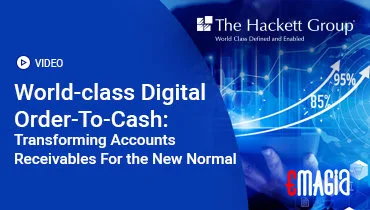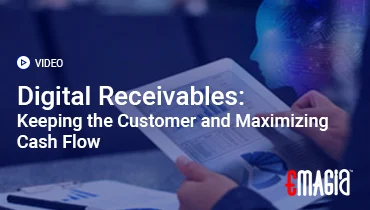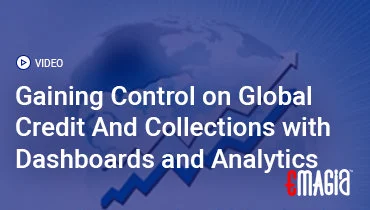In today’s hyper-competitive and data-rich business landscape, organizations are drowning in information. From sales figures and inventory levels to customer behavior and financial metrics, data is constantly being generated. Yet, merely collecting data isn’t enough. The true challenge lies in transforming this ocean of raw information into actionable intelligence, and doing so quickly enough to make a difference. Relying on manual reports, retrospective analysis, or waiting for problems to escalate means missing critical opportunities and reacting too late to emerging threats.
Imagine if your business had an intelligent early warning system, capable of notifying key stakeholders the moment a critical threshold is crossed, a significant trend emerges, or an anomaly is detected – without anyone having to manually check reports. This is the transformative power of Proactive Data Alerts. It’s about moving from reactive data analysis to anticipatory action, empowering decision-makers with timely, relevant insights right when they need them.
So, what exactly are `data alerts`, and how do they function as a sophisticated business intelligence tool? What are the different types of alerts, and what benefits do they unlock across various departments? This comprehensive guide will delve deep into the world of intelligent notification systems, exploring their core mechanisms, real-world applications, and best practices for implementation. Get ready to discover how to harness the power of real-time insights to optimize performance, mitigate risks, and drive agile, data-driven decisions.
Understanding Proactive Data Alerts: The Shift from Reactive to Anticipatory
Before diving into the specifics, let’s establish a clear definition of `data alerts` and how they revolutionize the way businesses consume and react to information.
What are `Data Alerts`? Automated Notifications for Key Insights
`Data alerts` are automated notifications triggered when specific conditions or thresholds within a dataset are met. Unlike traditional reports that require users to actively pull and analyze data, alerts push relevant insights directly to the appropriate individuals or teams. They act as an automated monitoring system, constantly watching your data for predefined events or deviations from normal patterns.
The essence of a `data alert system` is to deliver timely, actionable information without requiring continuous manual oversight. This enables `real-time data monitoring` and immediate response.
The “Proactive” Element: Anticipating Needs, Not Just Reacting
The “proactive” aspect of Proactive Data Alerts is what sets them apart. It means designing alerts to anticipate potential issues or opportunities before they fully materialize, rather than just notifying about events that have already occurred and potentially caused damage. For instance, instead of an alert for “Sales fell by 20% last month,” a proactive alert might be “Sales are trending 10% below target for the first week of the month,” allowing for mid-course corrections.
This forward-looking capability helps businesses avoid negative outcomes or seize fleeting opportunities, making them a crucial component of `business intelligence alerting`.
Why Manual Reporting Falls Short in a Dynamic Environment
In today’s rapidly changing business environment, relying solely on manual reporting and periodic dashboards creates significant limitations:
- Lag Time: Data is often stale by the time it’s manually compiled and reviewed.
- Information Overload: Users can be overwhelmed by too much data, making it hard to spot critical shifts.
- Missed Opportunities/Risks: Critical events can go unnoticed for too long between reporting cycles.
- Resource Drain: Manual data compilation consumes valuable time and labor.
`Data alerts` overcome these shortcomings by pushing relevant insights instantly, fostering `real-time analytics` and `actionable data insights`.
Types of Proactive Data Alerts: Tailoring Notifications to Business Needs
Proactive Data Alerts can be configured in numerous ways, tailored to specific business objectives and the nature of the data being monitored.
A. Threshold Alerts: When Key Metrics Cross a Line
These are the most common type, triggered when a specific metric goes above or below a predefined value.
- Examples:
- “Accounts Receivable (AR) aging for Customer X exceeds 60 days.”
- “Inventory levels for Product Y drop below reorder point.”
- “Website traffic falls by 15% in an hour.”
- “Daily sales target not met by afternoon.”
- Use Cases: Operations, Sales, Finance, Customer Service for `performance monitoring`.
B. Anomaly Detection Alerts: Spotting the Unusual
These alerts are triggered when data deviates significantly from established patterns or historical norms, indicating something unusual or potentially problematic. They often leverage machine learning to identify `data anomalies` that might not be obvious with simple thresholds.
- Examples:
- “Unusually high volume of returns from a specific region.”
- “Unexpected spike in payment deductions from a consistent customer.”
- “Login attempts from an unusual geographical location.”
- Use Cases: Fraud detection, cybersecurity, quality control, `risk mitigation`.
C. Trend Alerts: Identifying Emerging Shifts
These alerts notify users when a specific metric shows a consistent upward or downward trend over a defined period, even if it hasn’t crossed a hard threshold yet.
- Examples:
- “Customer churn rate increasing for three consecutive weeks.”
- “Average order value showing a steady decline over the last month.”
- “Collection efficiency (DSO) showing an upward trend.”
- Use Cases: Strategic planning, market analysis, `predictive analytics`.
D. Predictive Alerts: Foreseeing Future Outcomes
Leveraging `predictive analytics` and AI, these alerts go a step further, notifying users about *likely future events* based on current data patterns. This allows for true anticipatory action.
- Examples:
- “Customer Z is predicted to default on their payment within the next 15 days.”
- “Inventory for Product A is predicted to run out by next Tuesday.”
- “Marketing campaign ROI is predicted to fall below target by end of month.”
- Use Cases: Credit risk management, inventory optimization, sales forecasting, `operational intelligence`.
E. Relationship/Correlation Alerts: Cross-Functional Dependencies
These alerts are triggered when a change in one data point has a statistically significant impact on another related data point, highlighting interdependencies.
- Examples:
- “Increase in marketing spend not correlating with anticipated sales uplift.”
- “Delay in supplier payment negatively impacting production schedule.”
- Use Cases: Supply chain management, cross-functional `performance monitoring`.
The ability to deploy these diverse `types of data alerts` ensures comprehensive coverage for proactive decision-making.
The Transformative Benefits of Implementing Proactive Data Alerts
Integrating Proactive Data Alerts into your business intelligence framework unlocks a multitude of advantages that directly impact efficiency, profitability, and strategic agility.
1. Faster Response Times and Agile Decision-Making
The most immediate benefit is the elimination of lag time. When critical data points are pushed directly to relevant stakeholders, decisions can be made faster and actions taken more swiftly. This enables true `agile business decisions` and `real-time insights`.
2. Enhanced Operational Efficiency and Resource Optimization
Alerts free up valuable human resources who would otherwise be spent on manual data monitoring and report generation. Teams can shift their focus from passively searching for problems to actively resolving issues identified by the alerts, leading to greater `operational efficiency`.
3. Proactive Risk Mitigation and Fraud Detection
Anomaly detection and threshold alerts act as early warning systems for potential risks, including fraud, operational failures, or compliance breaches. This allows businesses to intervene early, preventing minor issues from escalating into major problems, directly contributing to `risk mitigation`.
4. Optimized Performance Across Departments
From sales and marketing to finance and operations, Proactive Data Alerts provide tailored insights that drive `performance optimization`. Credit teams can be alerted to high-risk customer accounts, marketing teams to campaign underperformance, and supply chain managers to potential disruptions, ensuring `actionable data insights` reach the right people.
5. Improved Customer Experience
By detecting issues early (e.g., potential service interruptions, delayed payments), businesses can proactively communicate with customers, resolve problems faster, and even personalize interactions. This leads to higher customer satisfaction and loyalty.
6. Data-Driven Culture and Empowered Employees
When employees receive timely, relevant alerts, they become more engaged with data and more empowered to make informed decisions at their level. This fosters a stronger `data-driven culture` throughout the organization.
Implementing a Robust Proactive Data Alert System: A Strategic Roadmap
Building an effective `data alert system` requires more than just enabling notification features; it demands a thoughtful strategy and careful execution.
1. Identify Critical KPIs and Business Objectives for Alerting
Start by determining which `key performance indicators` (KPIs) are most vital to your business objectives. What are the metrics that, if they change significantly, require immediate attention? Examples include Days Sales Outstanding (DSO), overdue receivables exceeding a certain threshold, cash balance falling below a minimum, or significant increases in customer deductions. This defines what data to monitor for `business intelligence alerting`.
2. Define Clear Thresholds and Conditions for Each Alert
For each KPI, establish precise thresholds or conditions that will trigger an alert. These should be based on historical data, industry benchmarks, and strategic goals. For anomaly detection, this involves training AI models on historical data to define ‘normal’ behavior. This step ensures alerts are relevant and not prone to ‘noise.’
3. Select the Right Technology Platform (`Alerting Software`)
Choose an `alerting software` or a business intelligence platform with robust `alerting capabilities`. Key features to look for include:
- Integration: Seamless connectivity with your data sources (ERP, CRM, accounting software, databases).
- Customization: Flexibility to define complex alert conditions, delivery channels (email, SMS, in-app, Slack), and recipients.
- Scalability: Ability to handle increasing volumes of data and alerts as your business grows.
- AI/ML Capabilities: For advanced anomaly detection and predictive alerts.
- User-Friendly Interface: Easy for business users to configure and manage their own alerts without deep technical knowledge.
- Centralized Alert Management: A system to manage all active alerts, historical triggers, and subscriptions.
4. Design Notification Channels and User Roles
Determine how alerts will be delivered (email, SMS, mobile app notifications, dashboard pop-ups, collaboration tools like Slack or Microsoft Teams) and who should receive them. Establish clear user roles and permissions to ensure the right information reaches the right person, preventing `alert fatigue`.
5. Pilot Program and Iterative Refinement
Start with a pilot program for a few critical KPIs or departments. Gather feedback from users on the relevance and timing of alerts. Continuously refine the thresholds, conditions, and delivery methods based on this feedback to optimize the `data alert system` over time. This `performance monitoring` loop is crucial.
6. Establish Clear Action Protocols for Each Alert
An alert is only valuable if it leads to action. For each critical alert, define clear protocols for what steps should be taken, who is responsible, and what the expected outcome is. This ensures `actionable data insights` translate into concrete business improvements.
Challenges and Considerations for Effective Proactive Data Alerts
While the benefits are substantial, implementing and maintaining an effective `data alert system` can present its own set of challenges that need to be addressed strategically.
1. Data Quality and Consistency: The Foundation
Alerts are only as good as the data they monitor. Inaccurate, inconsistent, or incomplete data will lead to false positives (noise) or missed critical events. Ensuring robust `data governance` and `data quality management` is a prerequisite for reliable alerts.
2. Alert Fatigue: Too Much of a Good Thing
If users receive too many irrelevant, redundant, or low-priority alerts, they will quickly become desensitized and ignore them. This `alert fatigue` can undermine the entire system. Careful threshold setting, user segmentation, and flexible notification preferences are essential to combat this.
3. Defining Meaningful Thresholds and Anomaly Patterns
Setting the right alert thresholds can be challenging. Too sensitive, and you get noise; too lenient, and you miss critical events. For anomaly detection, training AI models requires sufficient historical data and iterative refinement to accurately distinguish between normal fluctuations and true `data anomalies`.
4. Integration Complexities with Existing Systems
Connecting `alerting software` to disparate data sources (legacy systems, various databases, cloud applications) can be technically complex and require significant IT resources. Seamless integration is crucial for real-time data flow.
5. Ensuring Actionability and Ownership
An alert serves no purpose if no one acts on it. Ensuring that alerts are routed to the responsible parties and that there are clear protocols for action, accountability, and follow-up is critical. Without this, alerts become mere notifications without tangible business impact.
Emagia: Powering Your Business with Intelligent Proactive Data Alerts
In the fast-paced world of Order-to-Cash (O2C) and financial operations, the ability to act swiftly on critical insights is paramount for maintaining healthy cash flow and mitigating risks. Emagia’s AI-powered O2C platform is meticulously designed to provide robust and intelligent Proactive Data Alerts, ensuring your finance teams are always ahead of the curve.
Emagia centralizes and unifies all your critical Accounts Receivable data – from invoice aging and payment patterns to customer credit risk profiles and deduction trends. Our cutting-edge Artificial Intelligence and Machine Learning algorithms continuously monitor this vast dataset, acting as a sophisticated `data alert system`. This allows Emagia to generate a wide range of `types of data alerts`, including:
- Threshold Alerts: Notifying credit managers when a customer’s `outstanding AR` exceeds a predefined limit or when an invoice hits a specific overdue bucket.
- Anomaly Detection Alerts: Flagging unusually high deduction volumes from a specific customer or unexpected changes in payment behavior that could indicate emerging risk or potential fraud.
- Predictive Alerts: Alerting collections teams when a customer is predicted to default on their payment based on their past behavior and credit health, enabling proactive outreach and `risk mitigation`.
- Performance Alerts: Notifying finance leaders if Days Sales Outstanding (DSO) is trending upwards or if cash application efficiency drops below target.
These `real-time data monitoring` capabilities ensure that your finance and AR teams receive `actionable data insights` directly to their preferred channels (e.g., dashboard pop-ups, emails), preventing `alert fatigue` by delivering only the most relevant and timely information. By partnering with Emagia, you’re not just getting notifications; you’re gaining an intelligent financial partner that transforms your data into an early warning system, empowering faster, smarter, and more agile business decisions that directly impact your bottom line and ensure robust `performance optimization` across your entire revenue cycle.
Frequently Asked Questions (FAQs) About Proactive Data Alerts
What is the core purpose of Proactive Data Alerts?
The core purpose of Proactive Data Alerts is to automatically notify relevant individuals or teams when specific conditions or thresholds within business data are met, or when anomalies or emerging trends are detected. This enables timely, informed, and anticipatory action, moving beyond reactive analysis.
How do `data alerts` facilitate `real-time data monitoring`?
`Data alerts` facilitate `real-time data monitoring` by continuously observing incoming data streams against predefined rules or learned patterns. When a condition is met (e.g., a KPI drops below a threshold), the system automatically pushes a notification, ensuring stakeholders are instantly aware of critical changes without manual checks.
What are the different `types of data alerts` commonly used in business?
Common `types of data alerts` include Threshold Alerts (when a metric crosses a value), Anomaly Detection Alerts (spotting unusual deviations from norms), Trend Alerts (identifying consistent upward or downward shifts), and Predictive Alerts (foreseeing future outcomes based on current data).
How do `Proactive Data Alerts` contribute to `risk mitigation`?
Proactive Data Alerts contribute to `risk mitigation` by acting as an early warning system. For example, anomaly detection alerts can flag unusual transaction patterns indicative of fraud, or threshold alerts can notify credit managers of escalating customer risk, allowing for timely intervention before issues escalate into significant losses.
Can too many `data alerts` lead to `alert fatigue`?
Yes, too many `data alerts`, especially if they are irrelevant, redundant, or low-priority, can definitely lead to `alert fatigue`. Users become desensitized and start ignoring notifications, undermining the entire system. This highlights the importance of careful configuration, user segmentation, and relevant thresholds.
What are the key benefits of implementing a comprehensive `data alert system`?
The key benefits of implementing a comprehensive `data alert system` include faster response times, enhanced operational efficiency, proactive `risk mitigation`, optimized performance across departments, improved customer experience due to timely issue resolution, and fostering a stronger `data-driven culture` within the organization.
Is `alerting software` only for large enterprises, or can small and medium-sized businesses benefit?
While `alerting software` offers massive benefits for large enterprises dealing with vast amounts of data, small and medium-sized businesses can also significantly benefit. Even with fewer data points, automated alerts for critical KPIs (like overdue invoices, low inventory, or budget overruns) can provide a competitive edge by enabling more agile and informed decision-making without dedicated analysts.
Conclusion: Empowering Agile Decisions and Sustained Growth
As we’ve thoroughly explored, Proactive Data Alerts are no longer a luxury but an indispensable component of modern business intelligence. They represent a fundamental shift from reactive analysis to anticipatory action, empowering organizations to respond with agility and precision in an increasingly dynamic marketplace.
By transforming raw data into timely, actionable insights, intelligent `data alert systems` unlock profound benefits: accelerated decision-making, enhanced operational efficiency, robust `risk mitigation`, and optimized performance across every facet of the business. While careful planning and continuous refinement are crucial for successful implementation, the strategic advantages of having an early warning system for your most critical data are undeniable.
Ultimately, investing in Proactive Data Alerts is about building a truly `data-driven culture`, where information is not just collected, but actively leveraged to inform every strategic move, ensuring sustained growth and a resilient future for your organization.



